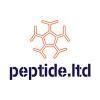That's right on, EC. In fact, concentrated oxygen breathed for over 10 minutes straight has been shown to be non-beneficial. Stough/Scholey discuss this in their book and in their studies. They think the optimal dose ranges from about 30 seconds to 3 minutes. "The dose-response for oxygen administration on performance appears to follow the Yerkes-Dodson inverted-U shape in a similar fashion to glucose facilitation with shorter doses of 30s to 3min appearing to be most beneficial while continuous oxygen breathing for longer than 10min leading to decline in performance (p. 93)." http://www.amazon.co...choley advancesOkay, so the message I'm hearing is that you dont breathe the pure oxygen for long periods of time. For instance I shouldn't put on an oxygen mask and breathe it in for an entire six hour study session. Instead you only breathe it in for a few minutes at a time.
How long does it last before you need to redose? Is the effect immediate or does it take some time? Do you build up a tolerance?
Piracetam works wonders for me except for the fact that it keeps me up at night. Is concentrated oxygen anything like piracetam?
Effects last 4-5 minutes (Scholey, p. 93), immediate effects, no tolerance
Similar to piracetam? Good question. I'll have to think about that one.
Just one last thing...In my experience, oxygen is THE most immediate nootropic. It's pretty much instant. That was one of the reasons I really wanted to try it...along with the fact that oxygen is so fundamental to our existence and we ingest it constantly. You can take bacopa for months if you want to (I have), but I like to try things that will have noticeable effects in a very short period of time. That way, I can have a pretty good idea if it's gonna work for me after a few days (or minutes). When you stretch the time period out to days and weeks and months, there are so many factors that can intervene along the way.
Trying 'instant noots' is just a little heuristic that I've found helpful in my self-experiments. Of course, once you've tried all of those then move on to longer term noots. Nothing dogmatic here...except finding what safely enhances your life. =)




















































